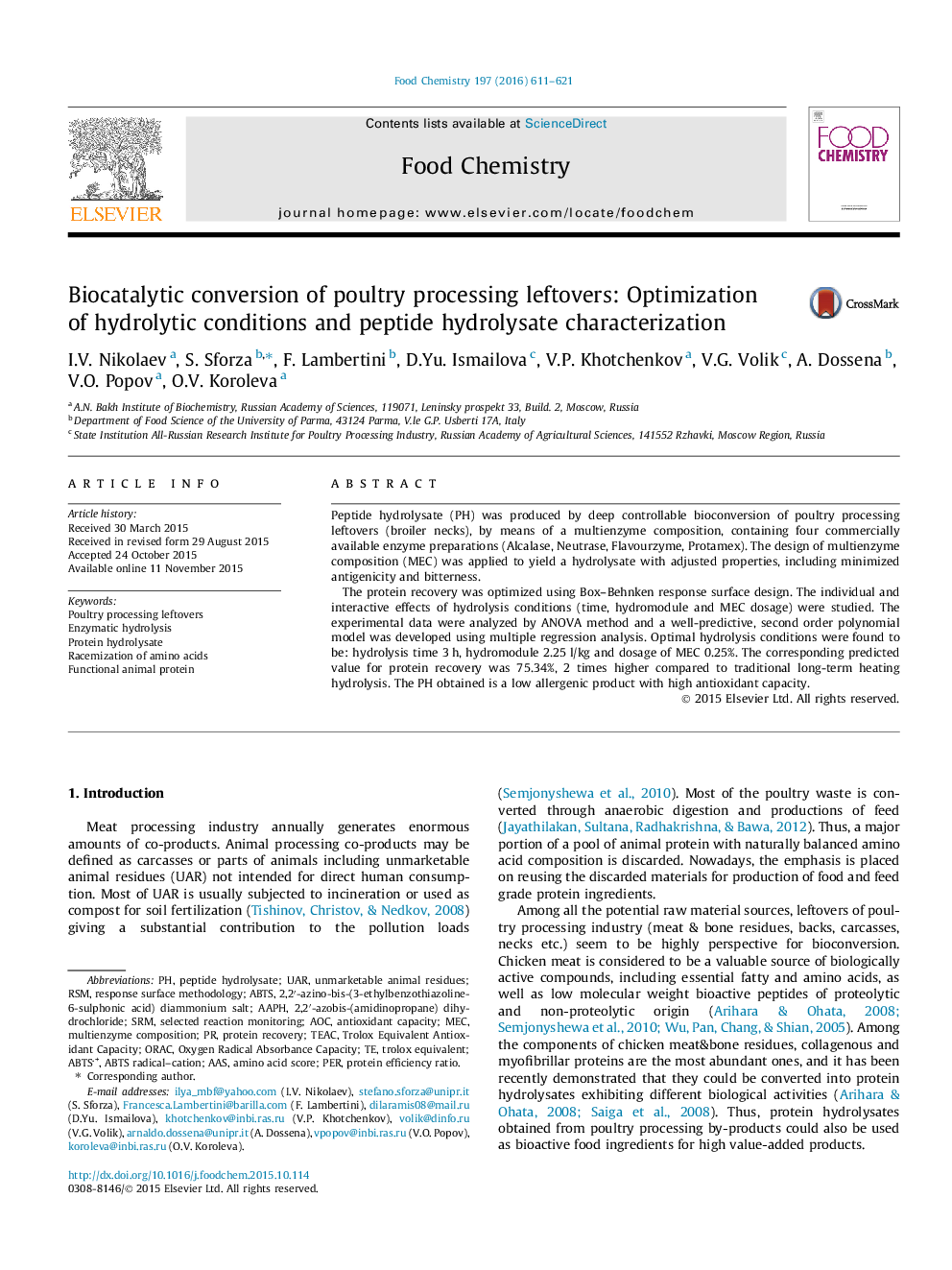| Article ID | Journal | Published Year | Pages | File Type |
|---|---|---|---|---|
| 1183501 | Food Chemistry | 2016 | 11 Pages |
•Multienzyme composition was designed to hydrolyze poultry processing leftovers.•A hydrolysate with low antigenicity and high antioxidant capacity was produced.•The protein recovery was optimized using Box–Behnken response surface design.
Peptide hydrolysate (PH) was produced by deep controllable bioconversion of poultry processing leftovers (broiler necks), by means of a multienzyme composition, containing four commercially available enzyme preparations (Alcalase, Neutrase, Flavourzyme, Protamex). The design of multienzyme composition (MEC) was applied to yield a hydrolysate with adjusted properties, including minimized antigenicity and bitterness.The protein recovery was optimized using Box–Behnken response surface design. The individual and interactive effects of hydrolysis conditions (time, hydromodule and MEC dosage) were studied. The experimental data were analyzed by ANOVA method and a well-predictive, second order polynomial model was developed using multiple regression analysis. Optimal hydrolysis conditions were found to be: hydrolysis time 3 h, hydromodule 2.25 l/kg and dosage of MEC 0.25%. The corresponding predicted value for protein recovery was 75.34%, 2 times higher compared to traditional long-term heating hydrolysis. The PH obtained is a low allergenic product with high antioxidant capacity.
